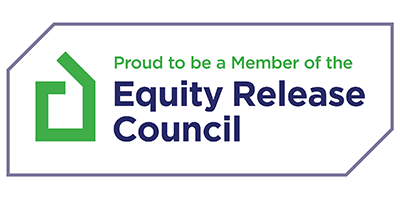In this article
Equity release works by allowing homeowners, aged 55 or over, to release tax-free money from their homes.
With most equity release plans, you’ll maintain full ownership of the property and you can choose whether to make monthly payments, like a regular mortgage, or not.
You can choose to take the money as a lump sum or in smaller chunks as and when required.
Equity Release
Explained in 2 mins 58 seconds
Find more videos like this on MoneymanTV
Is Equity Release Right For Me?
Here at UK Moneyman, we are one of a limited number of mortgage advisors in the UK that can consider the full range of later life mortgage products.
The full range, in order of consideration, is a regular mortgage which, in some cases, can run until age 85, the wide collection of more specialist retirement interest only mortgage products (RIOs) and lifetime mortgages, including equity release plans.
Our specialist later life team will recommend the most appropriate product or combination of products for your personal situation. It’s important to remember that equity release is not the only answer, and another option may suit your circumstances and needs better.
You are only able to release equity, via an equity release plan, from your main residence, not a second home or buy to let property. Regular mortgage options maybe more suitable in these situations
The Application Process
If you feel ready to take the next step with us, we’d love to hear from you. You can telephone or book online to arrange a free, no-obligation consultation where we can discuss your equity release options.
We’ll answer all your questions and recommend a way forward. We don’t need anything in the call other than your ages and your address.
Evening calls are available to fit around any work or family commitments also.
Do I have to make monthly payments with equity release?
Yes, but you can choose how that interest is handled. Some lifetime mortgages let you avoid monthly payments entirely, with interest rolling up over time.
Others allow you to pay the interest monthly, just like a standard mortgage, or to pay a smaller fixed amount to keep the interest as low as possible.
You only pay interest on the amount you actually release. So if your total facility is £100,000 but you only take £10,000 in the first year, interest is charged just on that £10,000. Nothing else accrues until you draw more funds later.
It’s worth speaking to an experienced age 50+ mortgage advisor, like the team at UK Moneyman, who can explain the different options and help you find the one that suits your needs.
What Happens When You Die or Enter Long-Term Care?
Your equity release plan is usually repaid from the sale of your home after you pass away or move into long-term care.
Lenders will require a death certificate and typically allow up to 12 months for the property to be sold. If your plan is in joint names, it continues until the second applicant either dies or enters care.
Family members can choose to keep the property by repaying the loan using savings, an investment, or a new mortgage in their own names.
How Does Equity Release Work If I Die?
Explained in 50 seconds
Find more videos like this on MoneymanTV
Protection with the No Negative Equity Guarantee
All the lifetime mortgages we recommend include the no negative equity guarantee. This ensures you or your estate will never owe more than the value of your home, provided it’s sold for a fair market price.
Making Equity Release Work for You
Equity release is often used to fund care at home, make improvements for easier living, or support your lifestyle over the age of 55.
We’ll help structure your plan so you only draw funds when needed, keeping interest costs lower. If family wish to be involved, we’re happy to include them in the conversation.







